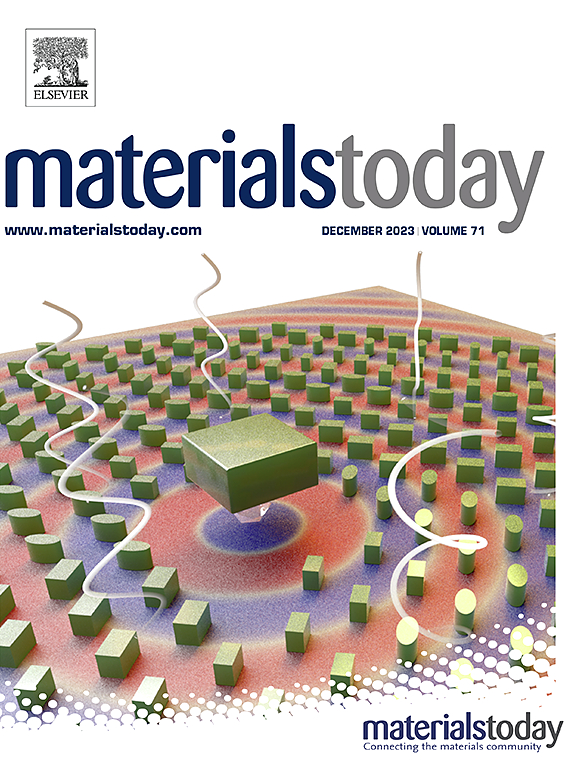High strain rate compressive deformation behavior of nickel microparticles
IF 21.1
1区 材料科学
Q1 MATERIALS SCIENCE, MULTIDISCIPLINARY
引用次数: 0
Abstract
Understanding the mechanical properties of metals at extreme conditions is essential for the advancement of miniaturized technologies. As dimensions decrease, materials will experience higher strain rates at the same applied velocities. Moreover, the interplay effects of strain rates and temperatures are often overlooked and could have critical effects in applications. In this study, for the first time, the rate-dependent and temperature-dependent mechanical response of nickel microparticles has been investigated. The microparticles were obtained by solid-state dewetting of nickel thin films deposited on c-sapphire. They exhibit self-similar shapes with identical sets of planes, facilitating straightforward comparison between particles. This research represents the first in-depth analysis of the mechanical properties of nickel single crystal dewetted microparticles across six orders of magnitude at room temperature and three orders of magnitude at 128 K. Molecular dynamics simulations (MD) were conducted in parallel on particles with the same faceting. In this work, the gap between experiments and simulations has been reduced to one order of magnitude in size and 3 orders of magnitude in the strain rates. Thermal activation parameter analysis and MD simulations were employed to ascertain whether homogeneous or heterogeneous dislocation nucleation was the dominant mechanism controlling deformation in the particles.

镍微粒的高应变速率压缩变形行为
了解金属在极端条件下的机械性能对小型化技术的进步至关重要。随着尺寸的减小,在相同的施加速度下,材料将经历更高的应变率。此外,应变率和温度的相互作用效应经常被忽视,并可能在应用中产生关键影响。在这项研究中,首次研究了镍微粒的速率依赖和温度依赖的机械响应。通过对c-蓝宝石上沉积的镍薄膜进行固态脱湿,得到了纳米颗粒。它们表现出具有相同平面集的自相似形状,便于在粒子之间进行直接比较。本研究首次深入分析了脱湿镍单晶微颗粒在室温下的6个数量级和在128 K下的3个数量级的力学性能。对具有相同面形的粒子进行平行分子动力学模拟。在这项工作中,实验和模拟之间的差距在尺寸上缩小到一个数量级,在应变速率上缩小到3个数量级。通过热活化参数分析和MD模拟,确定了均匀位错形核还是非均匀位错形核是控制颗粒变形的主要机制。
本文章由计算机程序翻译,如有差异,请以英文原文为准。
求助全文
约1分钟内获得全文
求助全文
来源期刊

Materials Today
工程技术-材料科学:综合
CiteScore
36.30
自引率
1.20%
发文量
237
审稿时长
23 days
期刊介绍:
Materials Today is the leading journal in the Materials Today family, focusing on the latest and most impactful work in the materials science community. With a reputation for excellence in news and reviews, the journal has now expanded its coverage to include original research and aims to be at the forefront of the field.
We welcome comprehensive articles, short communications, and review articles from established leaders in the rapidly evolving fields of materials science and related disciplines. We strive to provide authors with rigorous peer review, fast publication, and maximum exposure for their work. While we only accept the most significant manuscripts, our speedy evaluation process ensures that there are no unnecessary publication delays.
 求助内容:
求助内容: 应助结果提醒方式:
应助结果提醒方式:


